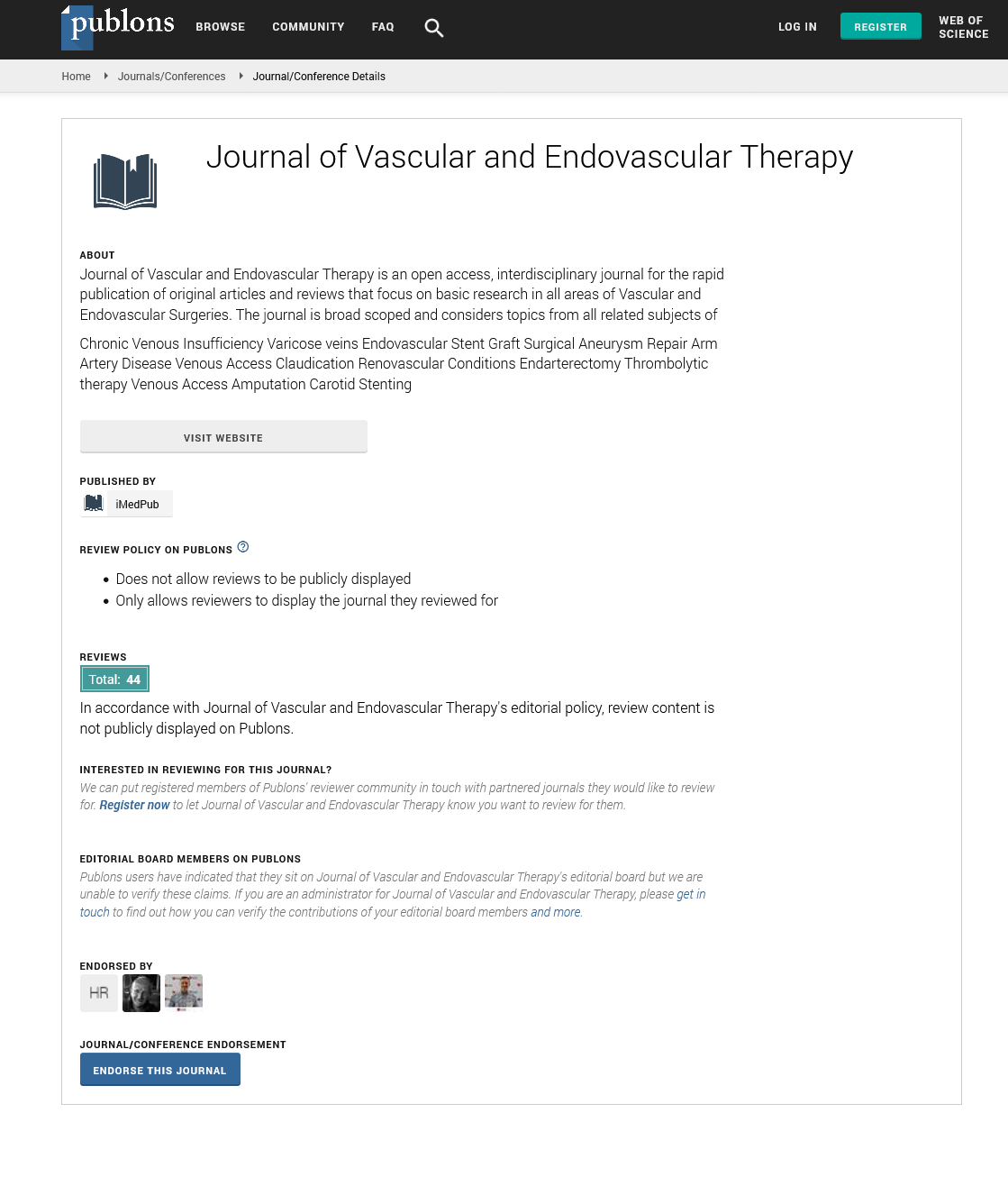Abstract
Predicting Stroke Risk in Patients with Carotid Artery Stenosis Using Contrast Enhanced Carotid Duplex Ultrasound to Quantify Plaque Vasa-Vasorum Volume: Results of a Pilot Study
Introduction: In selecting patients for carotid revascularization, relying solely on symptoms and/or degree of stenosis is not sufficient. Patients with severe stenosis often remain asymptomatic, while other patients with moderate stenosis experience stroke. In contemporary practice, surgery or intervention is carried out much more often in asymptomatic patients. With the advent of improved medical management, the indications for surgery or intervention in the asymptomatic have become unclear. We utilized a technique for measuring Plaque Vasavasorum Volume (PVV) using Contrast Enhanced Carotid Duplex Ultrasound (CECDU) as a novel method for identifying asymptomatic patients with carotid artery stenosis who are at highest risk for stroke and thus more likely to benefit from early revascularization.
Objective: To establish the diagnostic accuracy and reliability of PVV measured by CE-CDU in identifying high risk carotid plaques and to identify a diagnostic cut-off point beyond which the risk of stroke exceeds the risk of surgery/intervention in asymptomatic patients with carotid stenosis.
Methods: The Stroke Prevention with Plaque Vasa-vasorum in Carotid Stenosis Study (SPIVICS) is a two phase multi-center double blinded prospective study. The first phase is a cross-sectional study of patients who qualify for carotid endarterectomy per current guidelines (asymptomatic patients with >70% stenosis and symptomatic patients with >50% stenosis). End points are analyzed using standard univariate and multivariate regression, correlation and diagnostic analyses.
Outcomes: Primary outcome relating to plaque morphology is the PVV volume. Clinical outcomes are neurologic symptoms (Amaurosis fugax, transient ischemic attack, and stroke) and asymptomatic events detected on imaging.
Results: A total of 16 patients were examined in this pilot study. Three were leadin subjects and four of them had severe calcified plaque and VV was not visualized. For those who had a successful screen, Mean age was 69 (± 7) years, Five males and the mean plaque VVV was 0.29 (± 0.62) mm.
Conclusion: Plaque Vasa-vasorum Volume is a promising predictor of stroke risk. By identifying patients who are truly at high risk for stroke, PVV measured by CECDU will establish more reliable criteria for patient selection for intervention. This in turn will help with stroke prevention, limit disability, save lives, and expend health care resources in a more selective manner.
Author(s):
Mahmoud B Malas, Isibor J Arhuidese, Besma Nejim, Umair Qazi, Tammam Obeid, Maya Salameh, Bruce Perler and Alexander Nodel
Abstract | Full-Text | PDF
Share this

Google scholar citation report
Citations : 177
Journal of Vascular and Endovascular Therapy received 177 citations as per google scholar report
Journal of Vascular and Endovascular Therapy peer review process verified at publons
Abstracted/Indexed in
- Google Scholar
- Open J Gate
- Publons
- Geneva Foundation for Medical Education and Research
- Secret Search Engine Labs
Open Access Journals
- Aquaculture & Veterinary Science
- Chemistry & Chemical Sciences
- Clinical Sciences
- Engineering
- General Science
- Genetics & Molecular Biology
- Health Care & Nursing
- Immunology & Microbiology
- Materials Science
- Mathematics & Physics
- Medical Sciences
- Neurology & Psychiatry
- Oncology & Cancer Science
- Pharmaceutical Sciences


